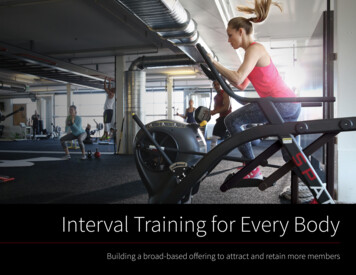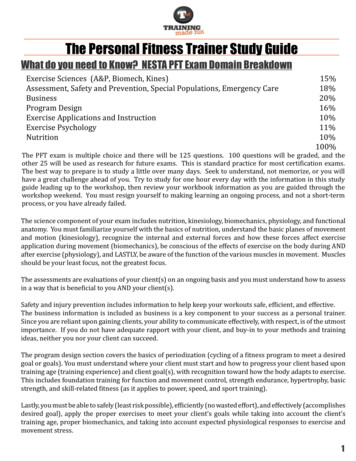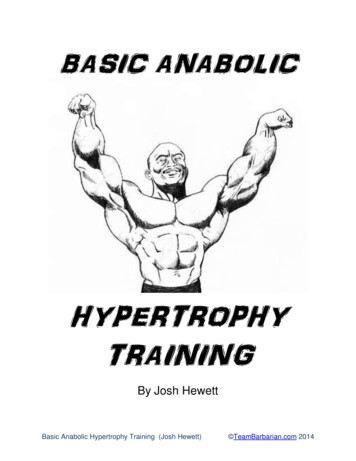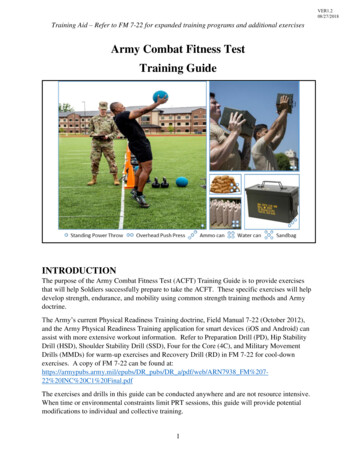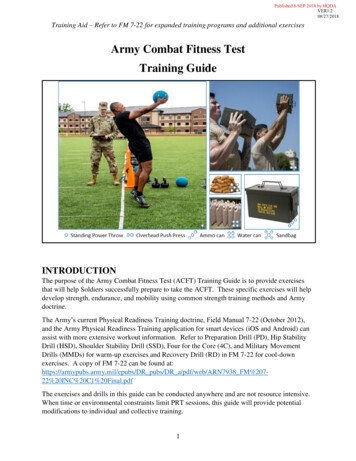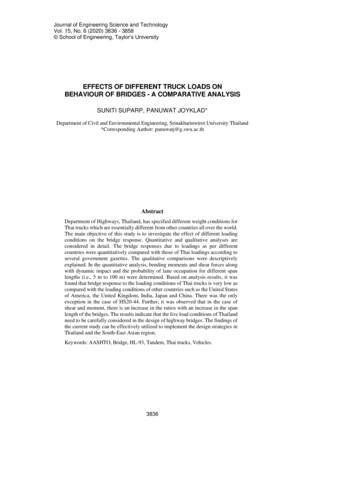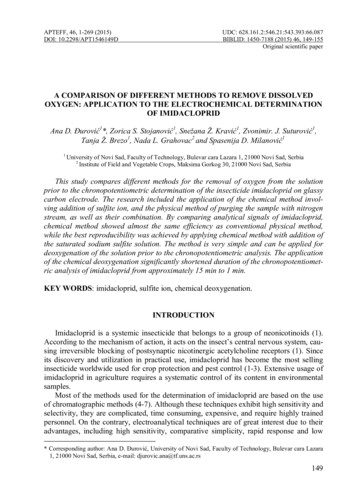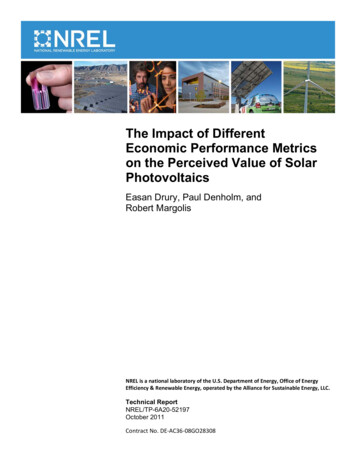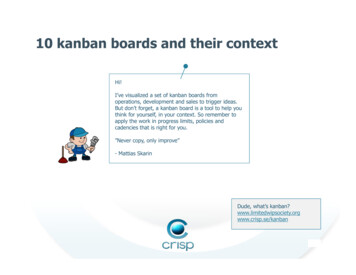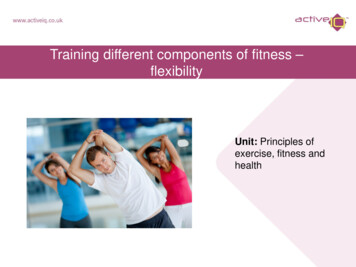
Transcription
Training different components of fitness –flexibilityUnit: Principles ofexercise, fitness andhealth
Learning outcomes & assessment criteriaLearning outcome: The learner will:LO1: Understand the effects of exercise on the bodyLO2: Understand the components of fitnessLO3: Understand how to apply the principles and variables of fitness to an exerciseprogrammeAssessment criteria: The learner can:1.6. Describe the short and long term effects of flexibility / stretching2.1. Define flexibility2.3. Identify the factors that affect flexibility3.3. Explain the principles of a progressive training programme in developingflexibility3.4. Explain how to recognise when and how to regress a trainingprogramme3.5. Explain the principles of adaptation, modification and progression foreach component of FITT
Small group taskWhat is flexibility?Definition
FlexibilityFlexibility - the range of movement about a joint or series of joints
Flexibility continuumLimited flexibilityExtreme flexibilityImmobileStiff and inflexibleBalancedmobility andflexibilityHypermobileRisk ofdislocationThe ability to move through the fullpotential range of movement atspecific joints.
The short-term benefits of flexibilitytraining include: Improved mobility Reduced muscle tension and tightness. Improved physical and mental relaxation. Improved range of motion. More effective and efficient movements Reduced risk of joint or muscle strains. Decreased delayed onset muscular soreness (DOMS) Decreased muscle viscosity, enabling contractions to be easier andsmoother.
The long-term benefits of flexibilitytraining include: Improved mobility for the joints and muscles.Reduced muscle tension and tightness.Improved physical and mental relaxation.Improved range of motion.More effective and efficient movementsImproved posture.Reduced risk of joint or muscle strains.Reduced risk of low back pain.Decreased delayed onset muscular soreness (DOMS)Decreased muscle viscosity, enabling contractions to be easier andsmoother. Improved coordination by allowing for greater ease of movement. Improvement and development of body awareness.
FlexibilityFrequency2-3 days a week.Ideally every dayIntensityTo the point of mild tension and mild discomfortTimeStatic stretches 10—30 seconds2-4 repetitions of specific muscle stretchesNB: A total of 60 seconds per muscle group is recommended.Stretches can be repeated 2-4 times to achieve this totalConsiderationsEnsure the body is warm before stretchingLengthen all muscles before exercise (dynamic or static)Stretch all major muscle groups after work (static stretching –developmental or maintenance)
Active static stretchingActively contracting one muscle or muscle group (agonist)to bring about a stretch of its opposing muscle group(antagonist).Pair task:Find anddemonstrate anexample of an activestretch
Passive static stretchingUsing another body part or external force (a yoga strap,wall, partner or gravity) to facilitate the stretch, enablingboth the agonist and antagonist to relax.Pair task:Find anddemonstrate anexample of apassive stretch
Applications of static stretchingMaintenance: Short stretches - 10-15 seconds. Use in the warm-up or cool-down Maintain flexibility in muscles that are not particularly tight. Stretch to point of mild tension and hold.Developmental: Held for a longer period of time - 30-60 seconds. Used in the cool-down Improve the range of motion in areas of tightness When the tension eases (stretch reflex) the stretch is taken furtherand held
Lengtheningmuscles andmoving jointsthrough rangeof motion ispart ofpreparationExercise session structureMain workout.To train specificcomponents offitnessStretching and flexibility canbe one of the maincomponents of fitnesstrained, e.g. yogaDevelopmentalandmaintenancestretches
Dynamic stretching Controlled movement of the limbs to lengthen muscles to the end oftheir range of motion Around eight to ten repetitions of each movement are performedunder control, gradually taking the stretch further Helps to maintain body temperature, e.g. warm-up No bouncing or jerking (ballistic stretching – exceeds ROM)Pair task:Find anddemonstrate anexample of adynamic stretch
Factors affecting flexibilityPair taskHow would each ofthe factors listedaffect flexibility?Discuss ideas withwhole group Age Gender Physique / Body type Activity level Illness Stress Environment, e.g. temperature
Trios - Practical workshop Find stretches for all the major muscle groups Discuss their appropriateness for clients with differentfitness and skill levels Discuss their appropriateness for warm-up and cooldown Discuss when muscle groups may need to be developed Find a range of modifications for the stretches to regressor progress
Learning reviewAssessment criteria: Can you now: Describe the short and long term effects of flexibility / stretching Define flexibility Identify the factors that affect flexibility Explain the principles of a progressive training programme in developingflexibility Explain how to recognise when and how to regress a training programme Explain the principles of adaptation, modification and progression foreach component of FITT
The long-term benefits of flexibility training include: Improved mobility for the joints and muscles. Reduced muscle tension and tightness. Improved physical and mental relaxation. Improved range of motion. More effective and efficient movements Improved posture. Reduced risk of

